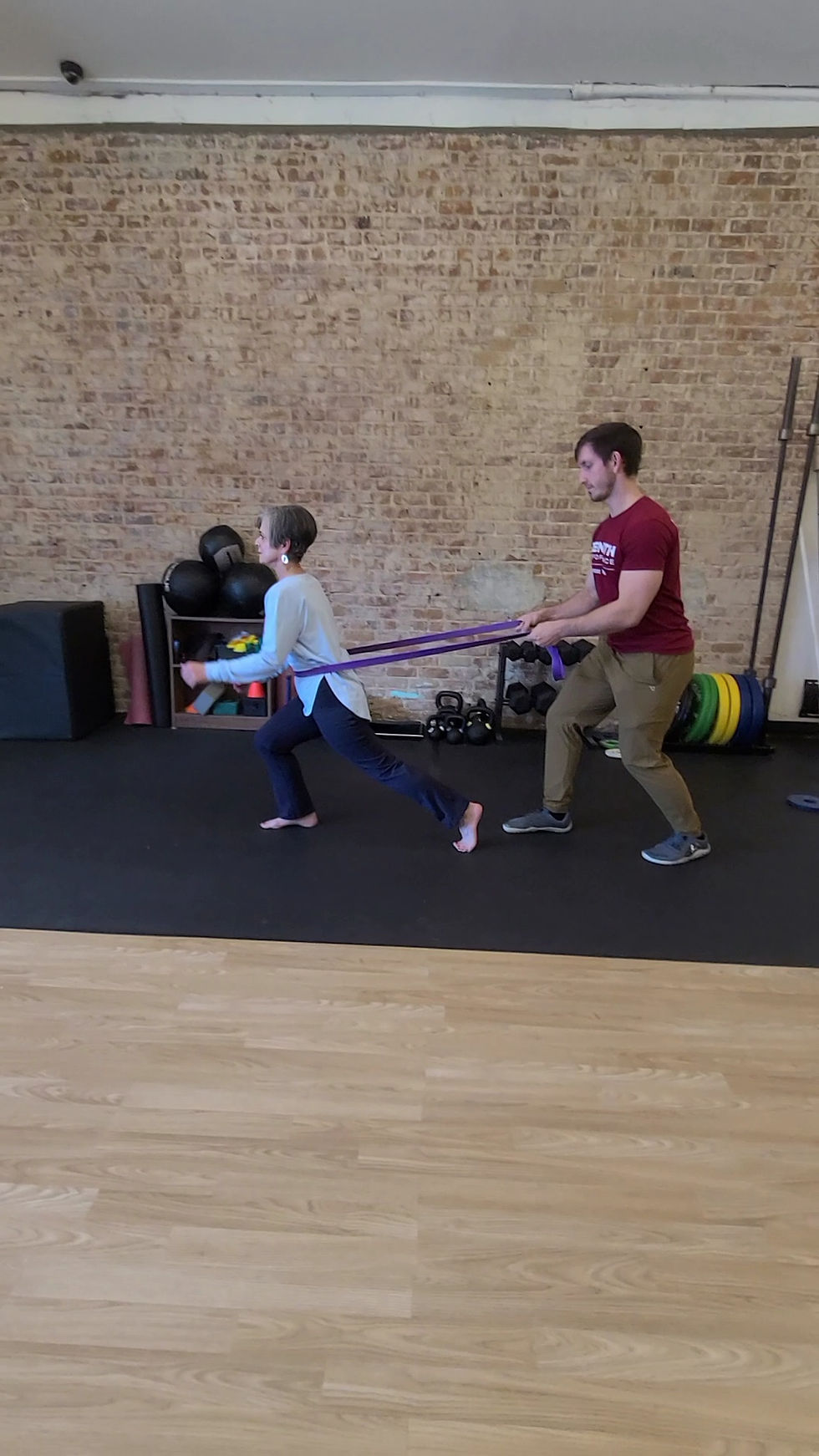The Case for Single Leg Jump Training for Runners:
- jeannette432
- Oct 9
- 3 min read

Gone are the days of having to laboriously convince runners that jumping is helpful for running. Patients come in during marathon prep and are sold already on the idea of plyometrics. Social media, coaches, run club friends, all preaching the benefits. It’s the execution of plyometrics that gets left muddied and wanting from my clinical perspective. I start plenty of people at double leg jumping, but most runners left to their own devices will stop there and leave tons of benefits on the table.
Let’s break down why this type of training is a game-changer for runners of all levels.
1. Running Is a Series of Single-Leg Movements
Here’s a simple truth: running is essentially a single-leg activity. At any given moment during your stride, only one foot is on the ground supporting your entire body weight (and then some, due to impact forces). So, it makes sense to train in a way that mimics those demands.
Single-leg jump exercises improve dynamic stability, helping your body stay controlled and aligned during high-speed single-leg landings. This translates to better form, greater efficiency, and fewer injuries.
2. Build Explosive Power Without the Gym
Want to run faster, especially during sprints or hill climbs? You need power—the ability to generate force quickly. Traditional strength training helps build force, but plyometric jump training teaches your muscles to apply that force explosively.
Single-leg bounds and hops activate the glutes, quads, hamstrings, and calves in a fast, sport-specific way. When done correctly, these exercises train the stretch-shortening cycle—the same muscle action that helps you spring off the ground with each stride.
The result? More propulsion, more speed, and better push-off mechanics.
3. Improve Balance and Proprioception
Single-leg jump drills are excellent for challenging your neuromuscular control. Each jump and landing teaches your body how to react to ground forces, adjust for stability, and correct poor alignment—all in real-time.
This improves proprioception (your body's sense of joint position and movement), which is critical for avoiding missteps, ankle rolls, and knee instability on uneven terrain or during fatigue.
4. Reduce Injury Risk
Weakness or instability in one leg can lead to compensation patterns that overwork certain muscles or joints—hello, IT band syndrome, shin splints, and runner’s knee.
By incorporating single-leg plyometrics, you can identify and address asymmetries early on. This type of training strengthens connective tissues, improves joint loading mechanics, and enhances eccentric control (your ability to absorb force)—key for preventing common overuse injuries.
5. Functional Strength That Transfers to the Road
Single-leg jumping isn't just about jumping higher—it's about becoming a more resilient and efficient runner. These exercises are functional, meaning they closely mirror the movement patterns of running. This makes them more effective than isolated gym machines for building real-world strength.
When your training includes dynamic, single-leg work, you build muscles that are stronger in the ways they’re actually used during a run.
Examples of Single-Leg Jump Drills for Runners
Start with these drills and build up as your strength and control improve:
Single-Leg Hops (in place or forward or creative directions)
Single Leg Forward Jump Combinations
Getting fancy with jump directions bestows the benefit of new force vectors that people tend to avoid with traditional jumps.
Start with 2 sets of 3-5 reps per leg, focusing on soft, sinky landings with good form. Quality over quantity. If you’re new to plyometrics, begin with basic balance and strength exercises before progressing.
Seeing some changes but still want a more individualized approach to your rehab? If you want to learn how to take control with some expert guidance and treatments to optimize your performance and longevity, then that’s exactly what we provide at Zenith Performance Physical Therapy. Call or text us at 562-502-1767 to schedule a free phone consultation and come in for an evaluation!
Thomas Bilodeau, PT DPT, USAW-L1
Zenith Performance Physical Therapy
ICE Certified Specialist: Orthopedics, Fitness Athlete, Older Adult







Comments